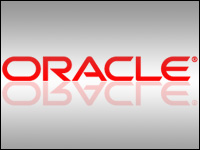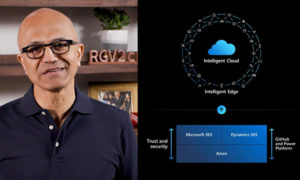
Oracle last week trumpeted a set of new Marketing Cloud features designed to improve the customer experience.
Oracle ID Graph, Rapid Retargeter and AppCloud Connect aim to boost sales by aggregating data from multiple sources and reacting to it in near-realtime.
However, they fall short of the cutting edge in CRM — predictive analysis.
“In today’s business climate, employing predictive analytics tools for your CRM and marketing efforts is crucial,” said John Oechsle, president and CEO of Swiftpage.
“Without predictive analytics, companies have the who and the what — but they don’t necessarily know when to reach out to a customer, where they would prefer to be reached, or how frequently they should be making contact,” he told CRM Buyer.
Understanding Customers
Oracle ID Graph helps companies answer one of the most vexing questions they face: Who are their sales targets?
Take a PC maker selling to corporations for instance. Is its customer the corporation’s purchasing department, or the head of the department that placed a PC order? Receiving department staffers sign for deliveries, so where do they fit in? Are they the customers?
ID Graph, powered by the Oracle Marketing Cloud and the Oracle Data Cloud, pulls together IDs across marketing channels and devices, so marketers can tie their interactions to an actionable customer profile and create a personalized experience for each customer.
Rapid Retargeter, part of Oracle’s B2C Cross-Channel Marketing solution, lets marketers adapt to customer interactions as they occur and react appropriately.
For example, customers who abandon online shopping carts may be sent a reminder of the cart’s contents or see a display ad campaign to reinforce the marketer’s brand almost instantly.
Oracle’s AppCloud Connect is a set of APIs and open frameworks that let organizations and marketing technology vendors leverage apps and media within the context of Oracle Marketing Cloud. It enables integration with existing Oracle Customer Experience Cloud applications such as Oracle Sales Cloud, Oracle Service Cloud, and Oracle Commerce.
Putting It Into Perspective
Salesforce introduced similar features in March.
So, is Oracle playing catch-up? The company is lagging Salesforce in many areas, co-CEO Mark Hurd has acknowledged.
However, Oracle has most of the world’s big companies as customers, noted Denis Pombriant, principal of the Beagle Research Group.
“These businesses don’t want solutions that have an appearance of being bleeding edge — they want stuff that works,” he told CRM Buyer.
Predictive analytics is important, Pombriant acknowledged, “but Oracle’s customer base has time to adopt it, and they have other things to adopt first — like more general-purpose analytics, journey maps and more.”
Playing to Oracle’s Strengths
The cloud has been very profitable for Oracle. Its cloud SaaS and PaaS revenue for Q3 totaled US$372 million, up 30 percent year over year.
The focus on the marketing department and on reactive rather than predictive technology may reflect Oracle’s strategy to further mine its existing customer base.
“I think this is an effort to boost their presence in marketing, which has been one of the largest pools of money for targeting analytics,” said Rob Enderle, principal analyst at the Enderle Group. “They are mining for that marketing they’ve been missing.”
Granted, smaller CRM companies offer more cutting-edge technologies, but “given Oracle customers are tied most tightly to Oracle tools, this provides a lever … to take [market] share,” Enderle told CRM Buyer. “When you’re as powerful as Oracle is in accounts, being late isn’t much of an impediment.”
Further, these tools “should provide pointers to customer experience problems that otherwise might not exist,” he suggested.
Modern technologies now support what Pombriant calls “customer science” in his just-released book, Solve for the Customer. Customer science seeks to apply scientific principles to the customer experience.
Subscription providers are the companies most solicitous toward customers, Pombriant said, and the big takeaway is that we “live in a subscription culture, where customers are being trained by subscription companies to demand more attention and forethought.”
























































Social CRM
See all Social CRM